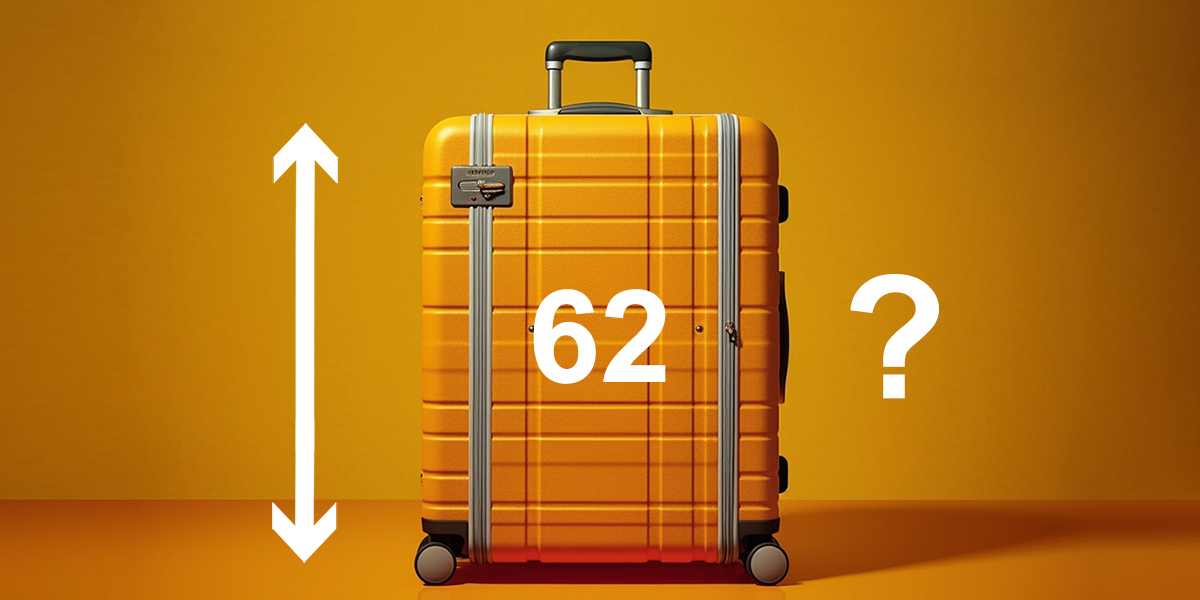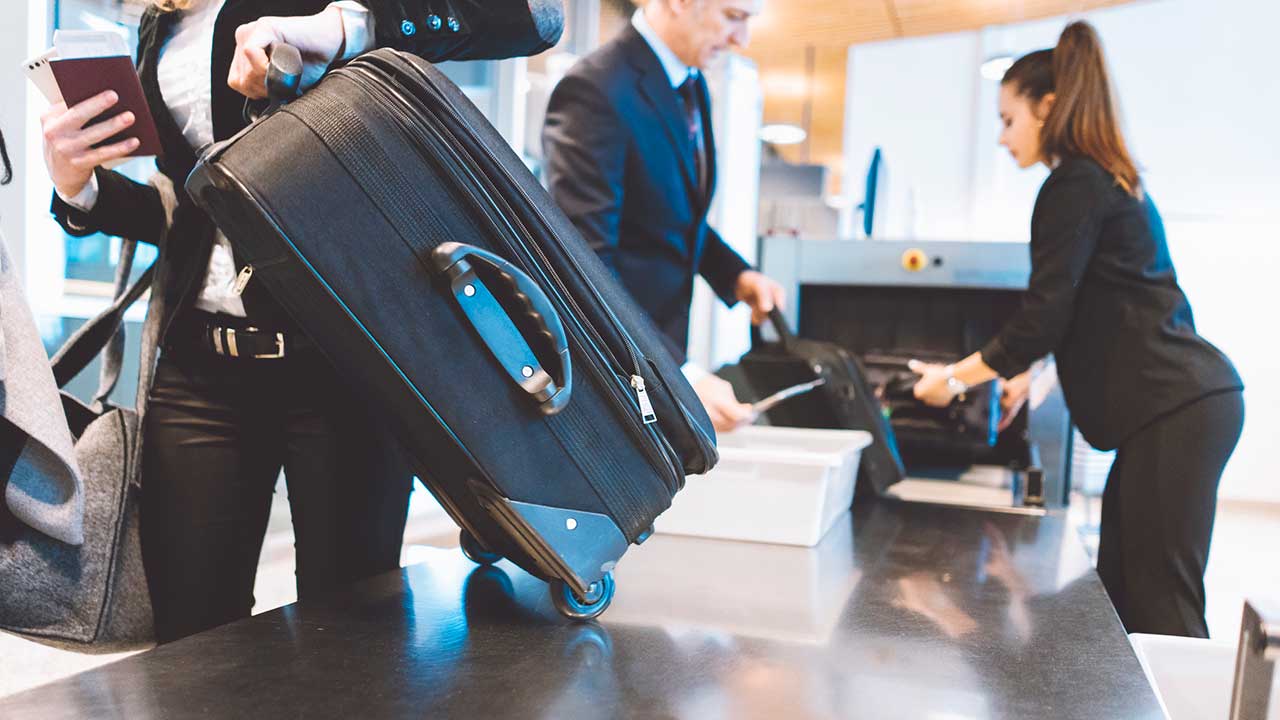Travelers need to be aware of standard luggage size categories when packing for a trip to avoid overweight or oversized bag fees. Most airlines categorize luggage as carry-on, checked, or oversized based on maximum dimensions.
Carry-on bags are intended to fit in the overhead bin or under the seat and usually have maximums of 22x14x9 inches. Checked bags are stored in the belly of the plane and commonly can be up to 25x16x10 inches. Oversized bags exceed these dimensions and often incur surcharges from airlines if they are not purchased as part of your ticket.
Not all carriers follow these exact limits, so it’s important to verify each airline’s specifications when booking travel. Understanding standard-size categories for luggage can help travelers stay organized and avoid unnecessary baggage fees.
Why is it important to measure luggage?

Airlines have strict size limits for luggage to ensure everything fits in the aircraft’s limited storage spaces. Both checked and carry-on bags require careful measuring since there is little room for oversized items. Failure to adhere to rules can result in high fees.
Baggage handlers also need enough space to safely maneuver bags, so oversized checked luggage requires extra resources. The boarding process is further streamlined by size limits on carry-on bags, which many travelers now rely on to avoid check-in fees. Even small personal items must fit neatly under seats without blocking aisles.
Airline staff check luggage dimensions both visually and using measurement frames. Personnel will measure any carry-on bags that appear excessively large at the gate. Oversized luggage may even be refused for transport on smaller planes or ones with high passenger loads. Travelers risk fees, delays or missing essential items if they disregard size restrictions.
Read More: Cheapest Way To Ship Luggage Internationally
How to measure luggage
Avoid airline luggage fees with these steps: check size limits for your airline, measure all bags before traveling, make sure luggage fits within limits whether carry-on or checked, and be ready for staff to remeasure gate-checked bags that look too big. Strict size rules keep flying safe and smooth.
Check airline restrictions
Luggage size restrictions vary between airlines and routes, so travelers must confirm regulations for every leg of their trip. Check-in bag measurements may use linear dimensions, with the most common limit of 62 inches, or specify maximums for length, width and height. EasyJet allows 108 linear inches while United allows 62, showing significant differences. Carry-on baggage is never measured linearly as it must fit overhead lockers. The common maximum is 22x14x9 inches but airlines often deviate from this.
Check luggage manufacturer guidelines

Check your bag manufacturer’s website for size specifications, but treat claims cautiously. A carry-on bag may fit most airlines but could exceed limits for others, especially budget carriers. Soft-shell suitcase dimensions vary with contents and smaller companies give wrong measurements and sometimes mix up units. To be sure what size your bag truly is, measure it at home before flying using a tape measure – compare your findings to airline policies to pack appropriately.
Pack your bags
Before measuring your luggage, pack it as if for your trip so you get an accurate size reading. An overfilled bag may appear larger than the allowed limits once stuffed full. Take time to learn optimized packing techniques that squeeze more into the available space as well. Proper folding methods for clothes can also provide savings, especially if traveling for business where each layer counts. Get the most from your luggage volume through smart loading methods.
Measure your luggage
Get out a measuring tape to determine accurate dimensions for each bag – length, width and height taken from the widest points. Include tags, wheels and extended handles but not retracted ones. Write down each number and compare totals to airline limits, adding length, width and height when they specify linear measurements. Do this for all luggage types – carry-on, checked and personal items. Checking measurements against the correct restrictions for your specific airline ensures proper packing within allowed sizes.
Weigh your luggage
In addition to size, weight is another key factor to avoid costly fines. Research airline weight limits for checked and carry-on bags which commonly fall around 23kg and 7-10kg but vary between carriers and domestic/international flights. Weigh luggage using a digital scale if possible or use a bathroom scale to weigh yourself and again while holding the bag to subtract your weight. Properly weighing all bags alongside measuring ensures airline regulations are followed for baggage size and weight on every leg of travel.
Standard Luggage Size Categories
Airlines categorize luggage based on standardized size allowances to ensure bags fit appropriately onto flights. There are typically three main categories that travelers need to be aware of – carry-on luggage, checked or stowed luggage, and oversized bags. Carry-on bags are meant to fit in overhead bins or under seats and usually have maximum dimensions of around 22x14x9 inches.
Checked luggage is intended for storage in the aircraft hold and commonly can measure up to 25x16x10 inches. Anything exceeding the standard carry-on or checked sizes would be considered oversized and often results in surcharges if not pre-paid. Travelers need to understand what dimensions qualify their luggage as carry-on or checked according to the airlines they are flying with.
Common Luggage Measurement Mistakes

Failing to measure all dimensions – Length, width, height and linear totals must all be checked.
Relying solely on luggage tags – Tags don’t always reflect the true size after items are added.
Leaving room for packing – Bags should be measured and packed as intended to travel.
Ignoring protrusions – Count handles, wheels, and corners in overall measurements.
Mixing units – Be certain measurements are taken in inches vs centimeters.
Measuring non-rigid bags loosely – Repacked items may exceed limits.
Believing manufacturer claims blindly – Advertised sizes aren’t always accurate.
Forgetting variability between bags – Personal items, carry-on and checked all governed by rules.
Not accounting for full contents – Weigh bags when fully packed for travel.
Relying on eyesight alone – Visual estimates allow for human error, use a measuring tape.
Allowances for Bulky Items
Most airlines have special provisions for passengers traveling with bulky items like sports equipment, musical instruments, or larger camera gear that may exceed standard carry-on restrictions. Common bulky items allowed include golf bags, skis, snowboards, and bulky cameras. However, these types of items often incur excess baggage fees.
It is important to confirm with the airline ahead of time what additional size and weight limits apply for bulky carry-on items. While they may be more flexible on dimensions since the items are irregularly shaped, weight restrictions typically still apply. Checking in these oversized pieces may also be required rather than bringing them onboard as carry-on.
FAQ’s
What is the standard size limit for most major airlines?
Most have a size limit of 62 linear inches or 158 cm for checked bags.
What tool do you use to measure?
A tape measure is the best option to accurately measure the length, width, and height.
Which dimension is the length?
Length is measured from one end of the bag to the other when lying it flat.
What is the widest point for width?
Width is measured across the bag at its widest point perpendicular to the length.
How do you measure the height?
Stand the bag upright on its shortest end and measure from the floor to the top of the bag.
Conclusion
Measuring luggage accurately is important to ensure bags meet size requirements for travel. Following the proper steps to measure the length, width, and height will help bags fit within checked baggage allowances. Be sure to lay the bag flat before measuring its length from one end to the other. For width, find the widest point across the bag perpendicular to the length. Stand the bag upright to get the height measurement from the floor to the top.
Adding an extra inch or two to your measurements can provide a buffer in case the bag expands slightly when full. It’s a good idea to re-measure if you add or remove items. Keeping careful records of your bag dimensions is also useful should an airline question size.
Proper measuring prevents late fees or bags from getting rejected at check-in due to oversized luggage. Taking the time to measure with a tape measure allows travelers peace of mind that their bags meet airline standards. Double-checking dimensions can save hassle and money on future trips.

